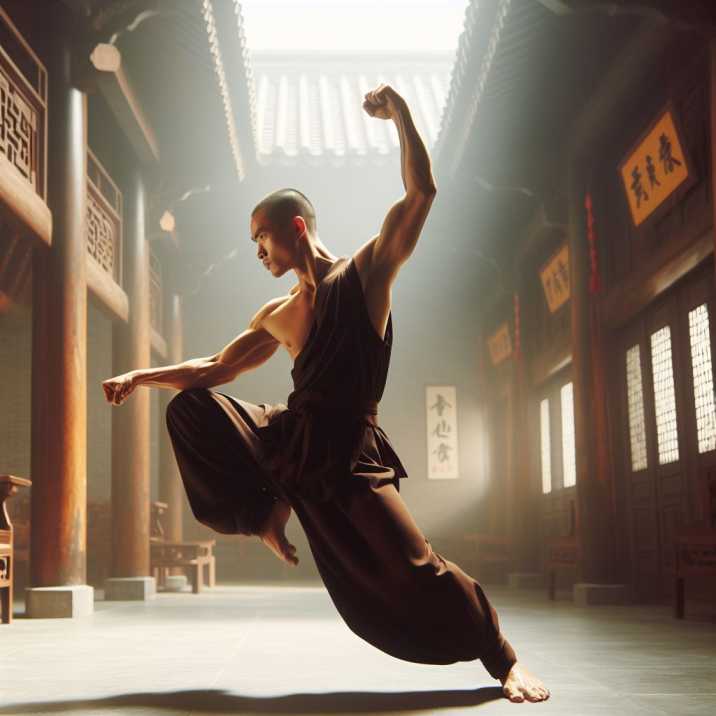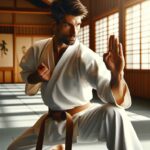Introduction:
Table of Contents
Kung Fu, with its rich history and deep-rooted philosophy, has captivated minds and hearts worldwide. Beyond its physical prowess, Kung Fu embodies a holistic approach to life, blending martial arts techniques with mental discipline and spiritual growth. In this comprehensive guide, we delve into the core principles of Kung Fu, shedding light on its essence and significance.

Principles of Kung Fu
Wu De (Martial Virtue):
At the heart of Kung Fu lies Wu De, the code of conduct that governs a practitioner’s behavior both inside and outside the training hall. Wu De emphasizes respect, humility, integrity, and self-discipline. By adhering to Wu De, practitioners cultivate moral character and uphold the values essential for personal growth and harmonious interactions.
Nei Gong (Internal Work):
Nei Gong focuses on internal cultivation, harnessing the power of Qi (life force energy) through breath control, meditation, and energy manipulation. By honing Nei Gong techniques, practitioners enhance their physical strength, mental clarity, and spiritual awareness, unlocking the hidden potential within.
Wai Gong (External Work):
Contrasting with Nei Gong, Wai Gong emphasizes external training, refining physical techniques and conditioning the body for combat. Wai Gong encompasses a wide array of practices, including stances, strikes, kicks, and defensive maneuvers, all aimed at developing agility, flexibility, and strength.
Zhan Zhuang (Standing Like a Tree):
Zhan Zhuang, or “Standing Like a Tree,” is a foundational practice in Kung Fu, focusing on static standing postures that cultivate balance, stability, and internal energy alignment. Through consistent Zhan Zhuang practice, practitioners develop a strong root, enabling them to withstand external forces while maintaining a calm and centered demeanor.
Yi (Intention):
Yi, often translated as “intention” or “mindset,” plays a pivotal role in Kung Fu, guiding the practitioner’s focus and directing the flow of energy during combat. By harnessing Yi, practitioners achieve mental clarity, strategic awareness, and the ability to adapt seamlessly to changing circumstances, essential for effective martial arts execution.
Jing (Essence):
Jing, the essence of Kung Fu, encapsulates the refined quality and precision displayed in every movement. It embodies the perfect alignment of body, mind, and spirit, resulting in effortless power and grace. Jing requires dedicated practice and meticulous attention to detail, elevating Kung Fu from mere physical exercise to an art form of unparalleled beauty.
Dao (The Way):
Central to Kung Fu philosophy is the concept of Dao, the path or way that guides practitioners on their journey of self-discovery and enlightenment. Dao transcends the boundaries of technique, encompassing broader principles of harmony, balance, and interconnectedness with the universe. By following the Dao of Kung Fu, practitioners not only excel in martial arts but also cultivate a profound sense of purpose and inner peace.
Below is an information-based table summarizing the key principles of Kung Fu:
| Principle | Description |
|---|---|
| Wu De (Martial Virtue) | Governs behavior inside and outside the training hall; emphasizes respect, humility, integrity, and self-discipline. |
| Nei Gong (Internal Work) | Focuses on internal cultivation through breath control, meditation, and energy manipulation to enhance physical strength and spiritual awareness. |
| Wai Gong (External Work) | Refines physical techniques and conditions the body for combat, including stances, strikes, kicks, and defensive maneuvers. |
| Zhan Zhuang (Standing Like a Tree) | Involves static standing postures to cultivate balance, stability, and internal energy alignment, fostering a strong root and calm demeanor. |
| Yi (Intention) | Guides focus and energy flow during combat, enhancing mental clarity, strategic awareness, and adaptability. |
| Jing (Essence) | Embodies refined quality and precision in movements, achieved through meticulous practice and attention to detail. |
| Dao (The Way) | Guides practitioners on a journey of self-discovery and enlightenment, transcending technique to embrace broader principles of harmony and balance. |
This table provides a concise overview of the essential principles of Kung Fu, facilitating quick reference and understanding for readers.
Conclusion:
In conclusion, the principles of Kung Fu offer more than just a framework for martial arts training; they provide a roadmap for living a fulfilling and meaningful life. Through Wu De, Nei Gong, Wai Gong, Zhan Zhuang, Yi, Jing, and Dao are, practitioners embark on a transformative journey of self-mastery, embodying the timeless wisdom of this ancient art.

FAQs:
- What is the significance of Kung Fu in Chinese culture?
- Kung Fu holds deep cultural significance in China, serving as a symbol of national pride, heritage, and identity. It embodies traditional values such as discipline, respect, and perseverance, reflecting the essence of Chinese philosophy and spirituality.
- How long does it take to master Kung Fu?
- Mastery of Kung Fu is a lifelong journey that requires dedication, perseverance, and continuous practice. While proficiency in basic techniques can be attained within a few years, true mastery involves a lifetime of commitment and refinement.
- Is Kung Fu suitable for self-defense?
- Yes, Kung Fu is an effective martial art for self-defense, providing practitioners with a diverse range of techniques for neutralizing threats and protecting oneself. However, proficiency in self-defense requires consistent training, mental focus, and situational awareness.
- Can anyone learn Kung Fu, regardless of age or fitness level?
- Yes, Kung Fu is accessible to individuals of all ages and fitness levels. With proper guidance and tailored training programs, anyone can embark on the journey of learning Kung Fu and reap its physical, mental, and spiritual benefits.
- What are some famous styles of Kung Fu?
- Kung Fu encompasses a wide variety of styles, each with its unique techniques, principles, and origins. Some of the most famous styles include Shaolin Kung Fu, Wing Chun, Tai Chi, Baguazhang, and Xingyiquan, each offering a distinct approach to martial arts training.


